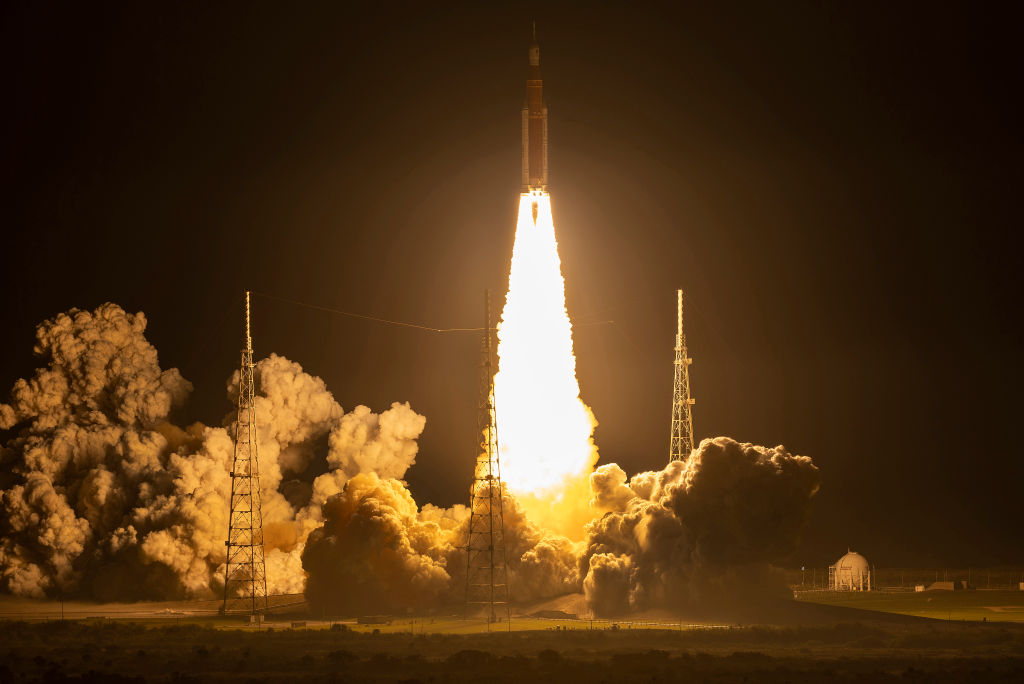
SpaceX has never been reluctant to brag, especially when it comes to its celebrated Falcon 9 rocket. Since 2010, as a company toteboard shows, 217 Falcon 9s have flown, with 61 launches in 2022 alone, making it the workhorse of the current global space fleet. So what’s not to like? Plenty, actually—at least if you care about the environment.
The Falcon 9 uses a fuel mixture of liquid oxygen and simple kerosene, and while the oxygen does not do any harm to the skies, the black soot created by the burning kerosene is injected directly into the stratosphere—the layer of air ranging from 12 km (7.5 mi.) to 50 km (31 mi.) above the Earth. There the soot lingers for up to five years, absorbing heat, contributing to climate change, and damaging the ozone layer, which exposes the planet to dangerous ultraviolet (UV) radiation. And SpaceX is not remotely alone.
According to a study by the National Oceanic and Atmospheric Administration (NOAA), global rocket launches (of which there were 180 last year, the study notes) inject about 1,000 tons of soot into the upper atmosphere per year. That will only get worse, NOAA warns, as the industry continues to expand. “The bottom line is projected increases in rocket launches could expose people in the Northern Hemisphere [where most rocket launches take place] to increased harmful UV radiation,” environmental scientist Christopher Maloney, the study’s lead author, said in a statement.
By themselves, rocket launches are small contributors to overall atmospheric pollutants. The aviation industry burns 100 times more fuel each year than all of the rockets launched globally combined. But there is a key atmospheric difference: airplanes fly in the troposphere about 11 km (6.6 mi.) above the ground. Soot precipitates quickly from this range compared to stratospheric soot which sticks around much longer. Indeed, according to the NOAA report, a single passenger aboard a rocket is responsible for 100 times more climate-changing pollution than a passenger aboard an airplane.
Not only does all of this warm the planet and damage the ozone, the NOAA scientists warn, but the change in temperatures can also slow subtropical jet streams, worsening summer monsoons in Africa and India. “We need to learn more about the potential impact of hydrocarbon-burning engines on the stratosphere and on the climate at the surface of the Earth,” said Maloney.
A version of this story also appears in the Climate is Everything newsletter. To sign up, click here.
The type of fuel used in the rockets can make a difference. SpaceX’s massive, 33-engine Starship spacecraft, for example, uses methane in place of kerosene. While methane is a powerful greenhouse gas by itself, it does burn cleaner than kerosene, putting out less black soot. Blue Origin’s New Shepard rocket is cleaner still, burning liquid oxygen and liquid hydrogen, and producing only water vapor as an exhaust—water vapor in the upper atmosphere still traps and retains heat, but not nearly as much as black soot, methane, or carbon dioxide do.
None of this means that the private rocket industry or growing space powers like China, India, and the United Arab Emirates—to say nothing of the U.S.—will be slowing down their launch schedules or becoming less pollution-intensive any time soon. Indeed, NASA’s new Space Launch System moon rocket, which first launched in November 2022, is an especially dirty machine. While it uses a liquid oxygen-hydrogen mix in its four main engines, its two attached solid fuel engines, which account for most of the vehicle’s thrust, produce the ozone-damaging pollutant chlorine.
The thriving space industry is typically seen as a boon for both the economy and for human exploration—and it is. But the launching of a monster rocket—with monster exhaust—like SpaceX’s anticipated Starship is a reminder that there can be too much of a good thing. If we keep increasing not just the size of rockets but the number of launches, we do so at a price; and as with so many other things, it is the climate that pays.
More Must-Reads from TIME
- Why Biden Dropped Out
- Ukraine’s Plan to Survive Trump
- The Rise of a New Kind of Parenting Guru
- The Chaos and Commotion of the RNC in Photos
- Why We All Have a Stake in Twisters’ Success
- 8 Eating Habits That Actually Improve Your Sleep
- Welcome to the Noah Lyles Olympics
- Get Our Paris Olympics Newsletter in Your Inbox
Write to Jeffrey Kluger at jeffrey.kluger@time.com